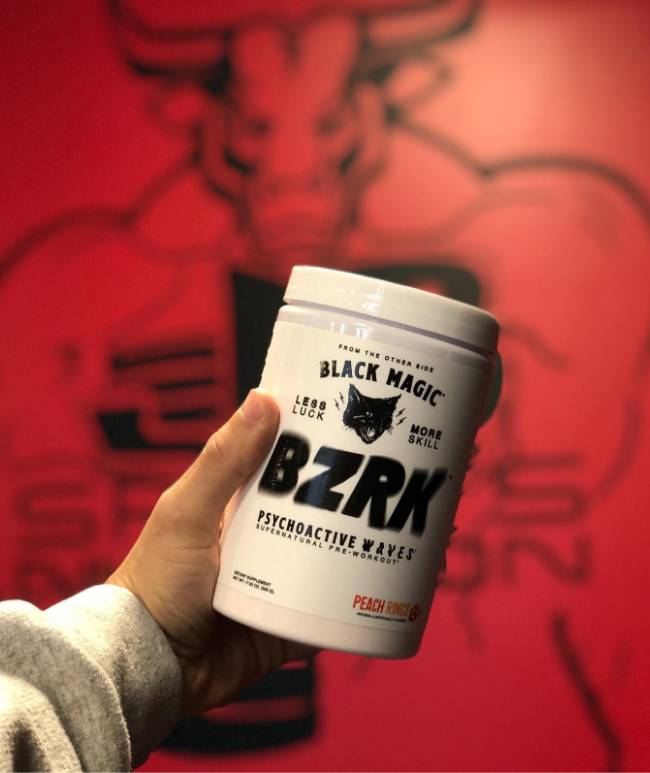3 Tips For Building More Muscle Mass
3 Tips For Building More Muscle Mass

Athletes and fitness enthusiasts usually attempt to put on size for two fundamental reasons: to improve physical appearance or to enhance athletic performance. For weight gain in the form of muscle mass a combination of diet, progressive resistance training, and the right type of cardio is essential. This article will discuss three tips to help you pack on lean mounds of muscles.
Tip #1: Eat more food, eat more often, & eat more protein
Muscle tissue is approximately 70% water, 20% protein, and 8% fatty acids and glycogen. If all the extra calories consumed are used for muscle growth during resistance training, then about 2500 extra calories are required for each 1-pound increase in lean tissue. Thus, 350 to 700 calories above daily requirements would supply the calories needed to support a 1-to-2-pound weekly gain in lean tissue as well as the energy needs of an individual’s training regimen.
To accomplish increased calorie intake, it is recommended to eat larger portions at mealtime, eat more items at each meal, eat frequently, choose higher calorie foods, or use a combination of these strategies. Practical experience shows that it’s hard to put on mass if an individual is eating less than five times per day.
In addition to eating more food, a person who is having a hard time putting on size should carefully examine their daily protein intake. General recommendations for strength training individuals is 1.4 – 2 grams of protein per kilogram body weight daily. If a person is a true hard gainer, they should shoot for the upper limit of this range. For example, an 180-pound (82 kilograms) individual might need to consume up to 164 grams of protein daily to support increases is muscle mass and size. This amount can be accomplished through diet and supplementation (such as protein powders). Furthermore, if you want to up the mass ante, try adding 5 grams of creatine/daily to your supplement stack.
Tip #2: Lift more frequently, lift more weight, & perform more exercises
Now that you are eating more it’s time to up the frequency and volume of your weight training program to put those extra calories to good use. In the beginning, a three day/week program may have helped you put on some decent size, but it is not going to cut it anymore if the goal is to get huge. The body is amazing at adapting to the stresses put upon it (check out Hans Seyle’s general adaptation syndrome), and after time the same strength training routine will not continue to produce results. So what’s the best way to change it up?
First, lift more frequently. Start by trying a six day a week split program where each major muscle group is worked at least two times a week. Research shows doing this produces more dramatic results in strength and size compared to one day a week. As an example chest and back could be worked on Monday, followed by legs on Tuesday, and finally shoulders and arms on Wednesday. Take a rest day on Thursday and repeat the cycle again. Of course, you will want to vary sets, reps, weight, and rest periods each session to keep the gains coming; which brings us to our second point
Lift more weight. To accomplish this the number of reps, sets, and weight can be manipulated daily and over the course of a training cycle to increase overall training volume. The best way to do this is through a combination of hypertrophy and pure strength training. From the example above the first three days of the week would focus on hypertrophy and the last three days would focus on strength. Review the following tables to see what a 4-week cycle including all these variables could look like:

*Number of sets and reps per exercise ** Calculate this weight by multiplying the amount you could lift for 1 rep by 67% or 85% *** Some exercises may require lowering the weight slightly to maintain good form and avoid injury (i.e. bicep curls). In these cases increase reps per set to 8.

*Number of sets and reps per exercise ** Calculate this weight by multiplying the amount you could lift for 1 rep by 75% or 90% *** Some exercises may require lowering the weight slightly to maintain good form and avoid injury (i.e. bicep curls). In these cases increase reps per set to 6-8.

*Number of sets and reps per exercise ** Calculate this weight by multiplying the amount you could lift for 1 rep by 80%, 90%, or 93% *** Some exercises may require lowering the weight slightly to maintain good form and avoid injury (i.e. bicep curls). In these cases increase reps per set to 6-8.

*Number of sets and reps per exercise ** Calculate this weight by multiplying the amount you could lift for 1 rep by 85%, 93% or 95% *** Some exercises may require lowering the weight slightly to maintain good form and avoid injury (i.e. bicep curls). In these cases increase reps per set to 6-8.
After four weeks test your 1RM on various exercises, adjust the weight as necessary and repeat this 4-week cycle again. After 6-10 weeks of this type of resistance training (in conjunction with increased calories) you should see significant gains in strength and size.
Finally, to optimize size, 3 to 4 exercises per major muscle group should be performed each training session. This will hit the muscles from all angles, recruit the maximal amount of muscle fibers, and stimulate muscle protein synthesis to a greater extent…. creating the optimal anabolic environment for mass gains. Using the 4-week training cycle from above an individual could utilize the following exercises:

*Core/lower back work should be performed 2-3 times/week either on training or rest days
Feel free to substitute your favorite exercises but be sure to include big, compound exercises that stress multiple muscle groups.
Tip #3: Cut Out the Long, Slow Cardio or HIIT More
Nothing kills gains in strength and size more than long, slow cardio. Additionally if getting/staying lean isn’t an immediate concern cutting out cardio for a period of time may expedite putting on mass. Cardio (more specifically the long, slow stuff) is the arch enemy of muscle mass for many reasons. One it burns more calories. Two it may cause the body to use proteins for repair instead of rebuilding. And three, cardio and strength training generally utilize two different bodily energy systems and muscle fibers (type 1 vs. type 2). If you absolutely cannot do without the cardio, a better option may be able to utilize HIIT training (High-Intensity Interval Training) two to three days a week in conjunction with strength training days or on rest days. Unlike long, slow cardio, HIIT uses the energy system and muscle fibers strength training does. It still burns calories, but it won’t sacrifice your gains as much as plodding along on the treadmill.
HIIT involves brief bouts of high-intensity exercise combined with lower intensity rest/recovery periods. For example, if an individual performed eight, 20 second “all out” sprints with 3-4 minutes of rest between sets to fully recover; this person would be HIIT training. Compared to aerobic training which is done continuously (compared to intervals) at a low to moderate intensity; HIIT training is performed at near maximal heart rate (90% or greater). It can lead to large physiological changes in a relatively short period and spare decreases in mass and strength compared to slow cardio…all while helping you to stay lean.
If you want to give HIIT a try, just google search the term, and you will be presented with a plethora of muscle and lung burning routines.
When Swole is the Goals and Size is the Prize
- Eat more calories
- Eat more often
- Eat more protein
- Lift more frequently
- Vary your routine between hypertrophy and strength
- Work each muscle group with 3-4 different exercises per session
- Cut out the cardio
- Or choose HIIT 2-3 times/week over long slow cardio













